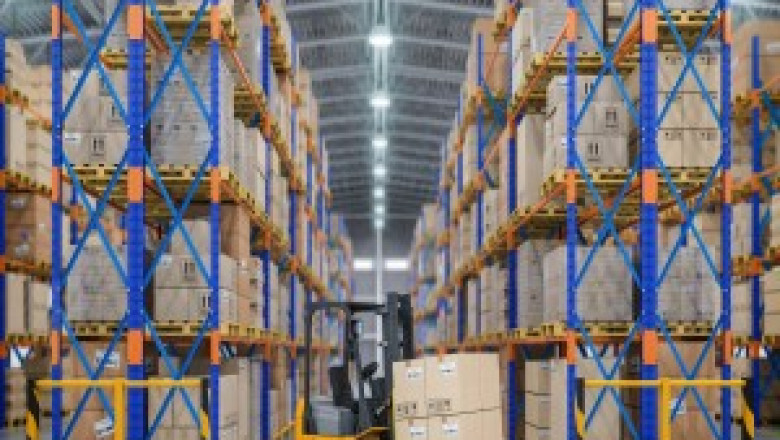views
Logistics Management- Defining Logistics
Logistics is defined as the efficient management of the flow of goods, information and other resources including energy and people between the point of origin and the point of consumption to meet customer requirements. Effective logistics management ensures efficient delivery of goods and services to customers. It involves planning, implementing and controlling procedures for the efficient and effective transportation and storage of goods including services, and related information from the point of origin to the point of consumption to meet customer requirements.
Inventory Management - Critical Component of Logistics
Logistics managing inventory is a key component of logistics management. Effective inventory management ensures the right products are available in the required quantities for customers. It aims to balance the costs of holding excess inventory against stockouts which hurt customer satisfaction and business growth. Companies use inventory management techniques like just-in-time, economic order quantity models, vendor managed inventory etc. to optimize inventory levels. Advanced technologies like RFID, AI and analytics help boost inventory visibility and predict demand more accurately to further improve inventory turns. Reduction of obsolete and excess inventory also frees up cash locked in unproductive inventory.
Warehousing and Storage - Vital Elements of the Supply Chain
Warehousing involves receiving, storing, protecting and distributing goods to various destinations. Effective warehousing requires proper space utilization, security measures, material handling equipment and trained manpower. Factors like type of goods, turnover rate, order patterns etc determine the type of warehouse set up - whether it should be an enclosed building or open yard facility. Automated storage and retrieval systems (AS/RS), conveyor systems, sortation systems help maximize use of available space and boost productivity. Climate control, fumigation and pest control ensure goods are maintained in optimum condition.
Transportation Management - Moving Goods Efficiently
Transporting goods between different facilities is a core logistics activity. Choosing the right mode of transport - road, rail, air or sea depends on factors like delivery timelines, cost economics, nature of goods etc. Road transport is most flexible but rail and sea freight offer significant cost benefits for bulk, heavier shipments over long distances. Multi-modal transport which combines different modes improves delivery speeds. Managing transportation effectively requires proper route planning, selection of capable carriers, monitoring of shipments and claims management if required. Technologies like fleet management systems and telematics help boost transport efficiency.
Customer Service and Reverse Logistics
Supply chain activities are ultimately aimed at satisfying customers' needs. Effective customer service involves proper order processing, meeting delivery timelines, tracking shipments, resolution of disputes, handling returns and refunds. Reverse logistics focuses on the return of goods from final customers. It requires establishing return hubs, sortation centers and refurbishment of returned items for resale where possible. Omnichannel fulfillment strategies enable faster delivery options while reducing inventory levels. Data analytics on past customer orders and returns also helps predict demand and optimize inventory replenishment better.
Use of Technology in Modern Logistics
Logistics is becoming heavily reliant on technologies to get faster, cheaper and more efficient. Cloud computing enables global, real-time visibility of inventories and shipments. Sensors and IoT devices monitor environmental factors during transit. Drones and autonomous vehicles are being tested for last mile deliveries. Blockchain helps establish trusted ledgers of transactions. AI and machine learning are being used for predictive analytics, automated workflow, demand forecasting etc. Advancements like 5G, robotics, augmented reality will further transform logistics in areas like autonomous warehouses, automated inventory counting. Such technologies optimize resource utilization, reduce costs and improve customer experience.
Challenges in Logistics
While logistics has become more advanced globally, local challenges still remain. Infrastructure constraints like limited road, rail and port capacity in developing nations restrict efficiencies. High inventory carrying costs remain an issue even after technological adoption. Skilled manpower shortage at warehouses, driver shortages plague some industries. Congestion affects the busy last mile deliveries. Cross border complexities like paperwork, duties complicate international logistics. Demand volatility due to economic cycles stresses inventory and transport capacity planning. Network complexity also grows with supply chain globalization. Sustainability initiatives around reducing carbon footprint during transportation pose both challenges and opportunities.
Effective logistics management remains vital for businesses to operate seamlessly. While technology is transforming the industry rapidly, the core of planning, controlling and implementing efficient movement of goods and services will remain. Modern tools boost visibility and optimize resource usage which helps businesses improve profitability through better supply chain responsiveness and customer satisfaction. Continuous innovation will ensure logistics remains a growth driver for both manufacturers and service providers going forward.
Get This Report in Japanese Language:
Get This Report in Korean Language:
Explore More Related Article On- Hypercar Market
About Author:
Priya Pandey is a dynamic and passionate editor with over three years of expertise in content editing and proofreading. Holding a bachelor's degree in biotechnology, Priya has a knack for making the content engaging. Her diverse portfolio includes editing documents across different industries, including food and beverages, information and technology, healthcare, chemical and materials, etc. Priya's meticulous attention to detail and commitment to excellence make her an invaluable asset in the world of content creation and refinement. (LinkedIn- https://www.linkedin.com/in/priya-pandey-8417a8173/)






















Comments
0 comment